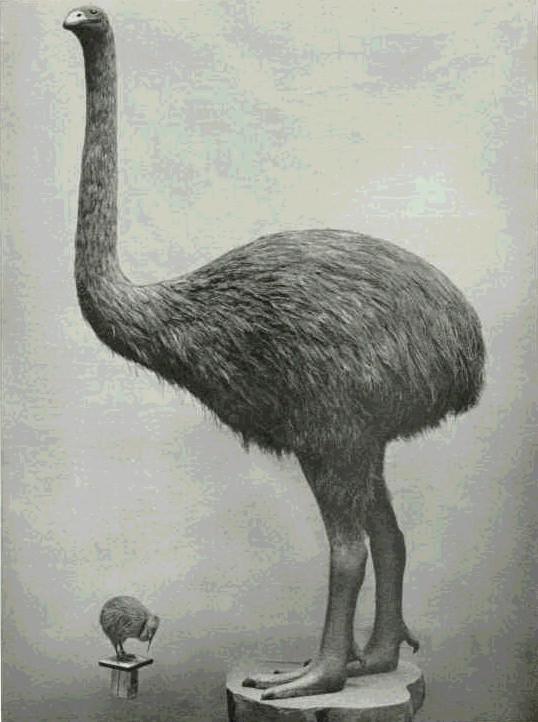Flightless birds of a feather don’t always flock together, at least in an evolutionary sense.
 While the moa and kiwi are both flightless birds and part of the species group known as ratites, they may have evolved to become non-flying species independently according to genetic research from a Canadian team – including New Zealander Prof Allan Baker, currently at the University of Toronto.
While the moa and kiwi are both flightless birds and part of the species group known as ratites, they may have evolved to become non-flying species independently according to genetic research from a Canadian team – including New Zealander Prof Allan Baker, currently at the University of Toronto.
Prof Baker and colleagues extracted ancient moa DNA (from the extinct little bush moa) along with DNA from emus and other flightless birds to assemble the largest dataset to date. The used differences in genetics to estimate the degree of similarity and relatedness between species.
Their results, published in Molecular Biology and Evolution, found convincing evidence that South American tinamous — a flying bird — are most closely related to the wingless extinct moa, and thus flight has been lost independently in ratite lineages. They showed that morphological characters of ratites interpreted on their molecular tree are mostly convergent, evolving independently, probably as an adaptation to a cursorial, “on-the-run” lifestyle.
Prof Baker’s research has received media attention both in New Zealand and abroad. Examples include:
The Conversation: Study explores evolution of flightless birds
National Geographic: Why Fly? Flightless Bird Mystery Solved
Daily Mail: Mystery of flightless birds solved as ground-dwelling birds evolved SEPARATELY
3 News: Study shows kiwi not closely related to moa
New Zealand Herald: Moa more closely related to South American flying bird than kiwi
MSN NZ: Moa not ancient cuzzie of the kiwi: study
Press (and other Fairfax papers): Extinct moa ‘not always flightless’